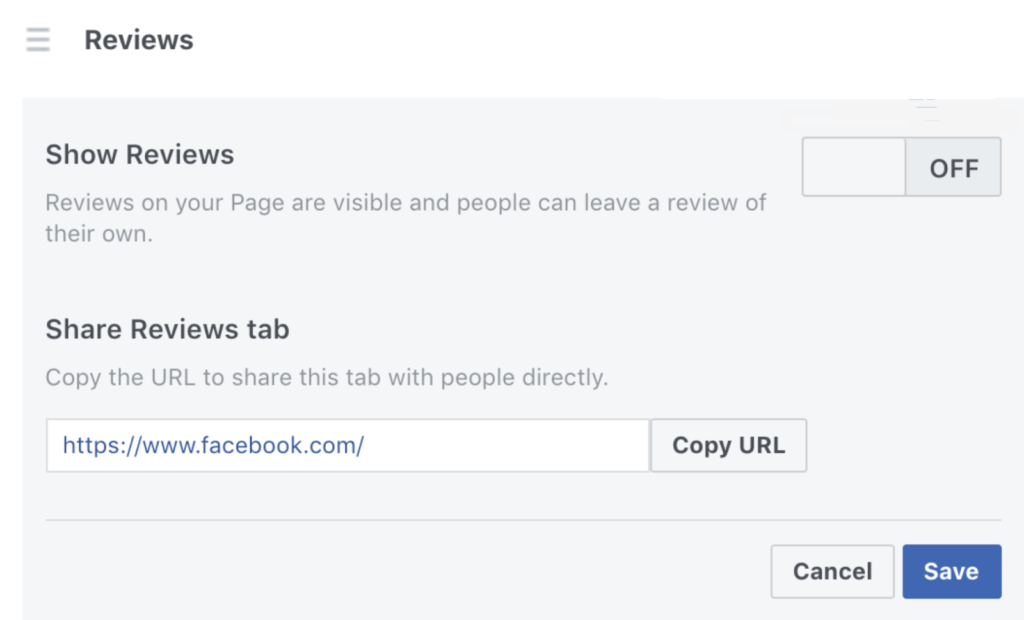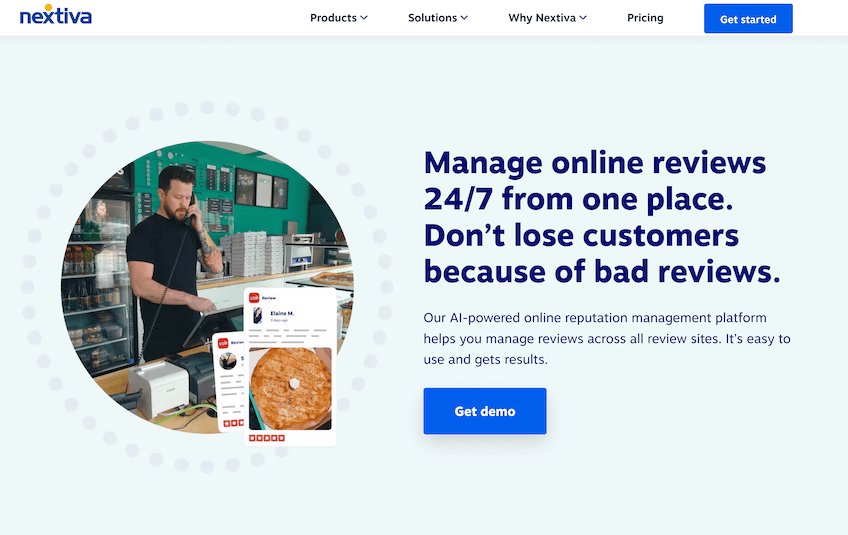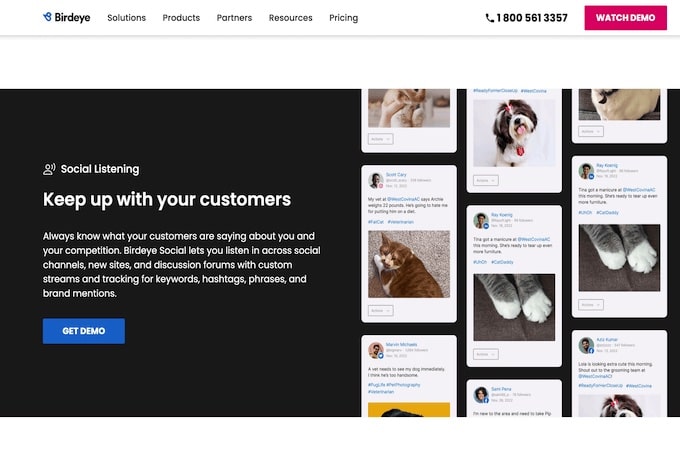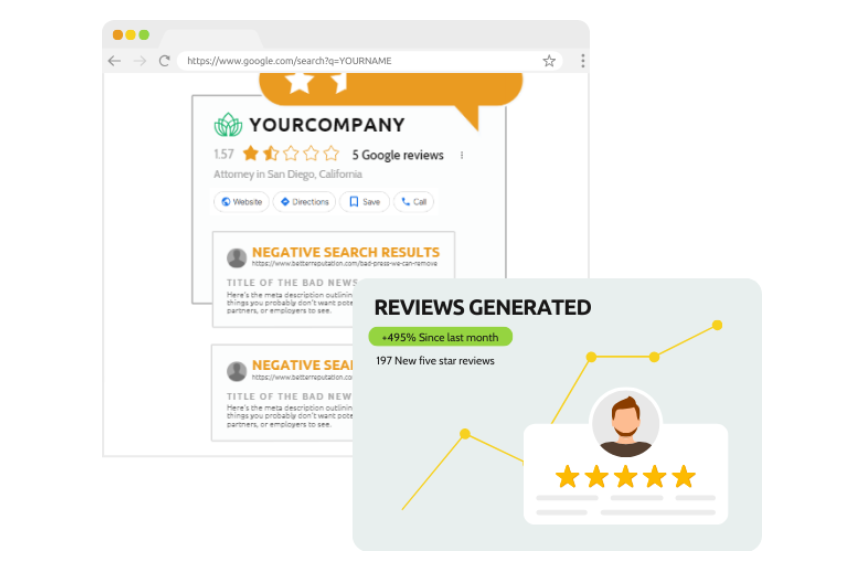Negative Facebook reviews can turn curious shoppers into skeptics fast. And if you face a coordinated “review bombing” attack—where trolls pile on with bad-faith feedback—the damage to trust and conversions can snowball.
This guide shows you practical ways to remove or neutralize harmful Facebook reviews, including how to flag policy-violating posts, how to respond to real customer complaints, and how to prevent future flare-ups—so your online reputation stays intact.
What Are Facebook Reviews?
Facebook reviews (often surfaced as Recommendations, and in some categories as ratings) are feedback posted on your business page by real accounts. They can be a simple yes/no recommendation or a written review, sometimes with photos—and, depending on your page type, they may display an overall rating.
Because Facebook ties feedback to user profiles, these reviews function as powerful social proof. Positive, specific reviews signal real customer satisfaction and strongly influence prospective buyers deciding whether to choose your business.
The Basics of Removing Reviews From Facebook
Facebook for business provides unmatched reach—but that visibility can attract unfair or inappropriate feedback. The good news: you can’t “edit” the truth, but you can report policy violations, respond professionally, and take steps that reduce the impact of bad-faith reviews.
Here’s how to approach the problem calmly and effectively.
Understanding Whether a Review on Facebook Is Fake
Before you try to remove a Facebook review, verify whether it’s legitimate. Start by cross-referencing the reviewer with your customer database, order history, booking system, support tickets, or POS records.
If the details match a real transaction, treat it as genuine and work to resolve it. If nothing lines up—or the story contradicts your records—it’s likely fake or in bad faith.
Watch for these common red flags:
- Newly created profile with little to no activity or friends
- Profile photo that appears generic, AI-generated, or obviously taken from elsewhere
- Details that don’t match your business (wrong location, hours, pricing, or services)
- Copy-and-paste phrasing you can find posted on other pages
- Reviewer is linked to a competitor or disgruntled former employee
- Review includes external links, competitor plugs, or demands freebies/refunds to remove the post
Unfortunately, removing fake Facebook reviews isn’t as simple as clicking “delete”—but you can report them when they violate Facebook’s rules.
Deleting Facebook Reviews From Customers Isn’t Possible
Can you remove or delete Facebook reviews? You can’t delete a legitimate customer review just because it’s negative. Facebook’s policy prioritizes trustworthy, transparent feedback and prevents businesses from scrubbing criticism.
What you can do: report reviews that are fake, abusive, or otherwise violate Facebook’s Community Standards. If a post clearly breaks the rules, Facebook may remove it after review.
When a review is simply critical but truthful, expect it to stay up. Your best response is to reply professionally, fix the issue if possible, and earn more positive reviews that outweigh the negative.
Deleting or Editing Facebook Reviews That You Wrote
You can edit or delete a Facebook review you personally posted—whether from your personal account or your business account.
Find the review, click the three dots, and choose the action you want.
Select Edit Review to update your text and click Save. To remove it, click Delete Review and confirm with Delete.
If you can’t locate the review on the page, try this instead:
- Tap your profile picture from your feed.
- Click the three dots.
- Go to Activity Log.
- Find the review under your past activity.
- Choose Edit Review or Delete Review.
These steps only work for reviews you authored. You can’t delete someone else’s review from your page.
Reporting a Review on Facebook
If a review violates Facebook’s Community Standards (e.g., harassment, hate speech, spam, impersonation, or non-customer misrepresentation), report it. You’ll have the strongest case if the review is clearly fake or includes prohibited content.
- Bullying or harassment
- Hate speech or slurs
- Impersonation and misrepresentation
- Targeted cruelty, profanity, or doxxing
To report a review on Facebook, do the following (paths can vary slightly by Page experience):
- Log into your Facebook business page.
- Open the Reviews (or Recommendations) section and locate the review.
- Click the three dots on the review’s top right.
- Select Report post (or Find support or report Recommendation) and follow the prompts.

After you submit, Facebook reviews the report and removes the content if it violates policy. You can report Recommendations (text-based reviews). Legacy star-only ratings may not offer the same reporting options.
Respond to Your Real Negative Facebook Reviews
When a legitimate customer leaves a negative review, reply quickly and professionally. A thoughtful response can turn a bad experience into a loyal customer—and demonstrates to onlookers that you take service seriously.
Use this simple framework: acknowledge the problem, apologize without being defensive, offer a specific next step (replacement, refund, fix), move sensitive details to DMs, and follow up publicly once resolved.
Keep the following in mind when you respond to:
- Be empathetic and non-confrontational.
- Respond promptly—ideally within 24 hours.
- Keep your response concise and solution-oriented.
Close the loop by confirming the resolution in the thread when appropriate. For deeper tactics, see our guide on responding to negative reviews.
Respond to Your Positive Reviews Too
Replying to all reviews—especially positive ones—reinforces goodwill and engagement. Thank reviewers by name when possible, reference a detail from their experience, and invite them back. This balances your page so negatives don’t draw all the attention.
Consistent, personable replies show prospective customers you’re active, listening, and easy to work with.
When visitors see thoughtful responses across the board, the occasional criticism won’t loom large.
Turning Off or Disabling Facebook Reviews
If fake or abusive posts overwhelm your page, you can disable Recommendations to hide reviews entirely. This hides both positive and negative feedback and pauses new submissions. When you re-enable the feature later, past reviews become visible again.
Here are the steps to disable reviews on Facebook (paths may vary depending on your Page experience):
- Open your business page while logged in as an admin.
- Click Settings.
- Go to Templates and Tabs (or the area where you manage Page sections/tabs).
- Find Reviews/Recommendations and choose Settings.
- Toggle Show Reviews off to disable the tab, then Save.

With reviews disabled, visitors won’t see prior negative feedback while you work to address issues or report violations.
2 Tools to Remove Reviews From Facebook
Reputation management matters for businesses of every size. These two reputation management platforms can help you spot, respond to, and escalate negative Facebook reviews faster.
Nextiva

Nextiva can send real-time alerts based on tags and keywords you define, so you can quickly identify posts that meet Facebook’s removal criteria and report them without delay.
Its listening features also extend beyond Facebook, giving you a single workflow to monitor, triage, and respond across major review sites—so bad-faith posts get handled quickly wherever they appear.
The centralized dashboard and automation reduce time to response, which helps you protect your reputation even when volume spikes.
Birdeye

Birdeye stands out for deep Facebook and Google integrations. You can automate review requests, manage replies in one inbox, and extract insights via Natural Language Processing (NLP) to spot recurring issues.
Beyond monitoring and response, Birdeye supports review generation and marketing—so you can showcase great feedback while addressing the negative. Everything runs from one platform for simpler team workflows.
Use these insights to improve operations, coach staff, and guide content that answers real customer concerns.
5 Tricks for Removing Reviews from Facebook
Use these best practices to stay in control and keep your review profile accurate and fair:
Manage Your Emotions
Bad-faith reviews are frustrating, but heated replies make things worse and can be screenshotted forever. Stay calm, stick to facts, and move sensitive exchanges to private messages.
Keep your standards high: consistent product and service quality will generate authentic praise that drowns out the noise.
Get More Positive Reviews
The most reliable antidote to a few negatives is a steady stream of genuine positives. After successful purchases or service calls, send a friendly, neutral request for feedback with a link to your page. Avoid incentives that could violate platform policies; instead, make it easy and fast for happy customers to share their experience.
Prospects expect to see an occasional critical comment—what matters is that the overall pattern is strongly positive and recent.
More fresh reviews also help highlight improvements you’ve made, which can win back trust.
Hire a Reputation Management Service
If you’re short on time or dealing with a surge in activity, a reputation management partner can help. They’ll streamline monitoring, draft responses, and escalate clear policy violations so fake reviews are removed when possible—and suppressed when not.
They can also implement compliant review-generation programs that encourage happy customers to share feedback, boosting your overall rating and credibility.
Over time, a healthier volume of authentic, positive feedback makes isolated negatives far less influential.

Set Alerts For New Facebook Reviews
Speed matters. If a bad review appears, the sooner you respond or report, the better.
Use alerts so you never miss activity on your page. Most reputation tools include configurable notifications; you can also use Birdeye for multi-site monitoring and instant review alerts.

Reply to Negative Facebook Reviews
Not every negative review will be removed, and moderation can take days. Reply publicly while it’s live so visitors see you’ve acknowledged the issue and offered a path to resolution.
Even if the post is later taken down, your timely, constructive response will already have signaled reliability to anyone who saw it.
When appropriate, invite the customer to continue the conversation privately and then update the public thread to confirm the outcome.
Frequently Asked Questions
Can you delete bad reviews from Facebook?
You can only delete bad reviews from Facebook if it’s determined that the reviews are fake or they violate Facebook’s community guidelines. That’s because Facebook is committed to transparency and won’t let businesses remove reviews simply because a customer had a bad experience. Businesses don’t have the power to delete reviews on their own. They must instead flag the review, and someone from Facebook will remove it if it violates their community standards.
How do you report fake reviews on Facebook?
If you think someone has left a fake review on your Facebook page, you can report it to Facebook by clicking on the three dots at the top right of the review. Choose Report post (or Find support or report Recommendation) and select a reason. The review won’t be removed automatically—you’ll need to wait for Facebook to review your report and decide whether it violates policy.
How do you hide Facebook reviews?
To turn off and hide Facebook reviews, navigate to your Page settings where you manage tabs/sections (often labeled Templates and Tabs). Locate the Reviews/Recommendations tab and toggle it off. This removes all existing reviews from public view and disables new submissions. You can turn them back on later, and past reviews will reappear.
Should I reply to bad Facebook reviews?
It’s typically in your best interest to respond to all Facebook reviews, including bad ones. Responding to negative Facebook reviews shows the dissatisfied customer that you care and can help restore their faith in your brand. This small step can prevent you from losing them as a customer altogether. Replying to bad reviews on Facebook also shows prospective customers that your brand is active, engaging, and taking the right steps to make customers happy. For additional tips and best practices, check out our guide on how to respond to negative reviews.
What happens when you report a review on Facebook?
When you report a review on Facebook, someone on Facebook’s team will evaluate your report and determine whether the review goes against Facebook’s community standards. If the reviewer finds the post in violation, they’ll remove it from your Facebook page. Your report is confidential, and the account you reported will not be notified that you reported them. It can take several days or more for someone on Facebook’s team to view your report and act on it.
How many reports does it take to remove a review from Facebook?
Just one report will trigger Facebook to review a recommendation or review. If Facebook determines that it violates their standards, they’ll remove it. If it’s not removed, you can usually submit another report with additional context.
What to Do Next
Now that you know how to remove reviews from Facebook, it’s time to focus on building a sound social media marketing strategy.
Admittedly, social media marketing isn’t easy. You have to spend time learning how to do it right. Luckily, there are a few strategies and techniques to make data-based decisions, steering your business towards success. When done properly, you can get more traffic for your business, score more positive reviews, and improve conversion rates.
